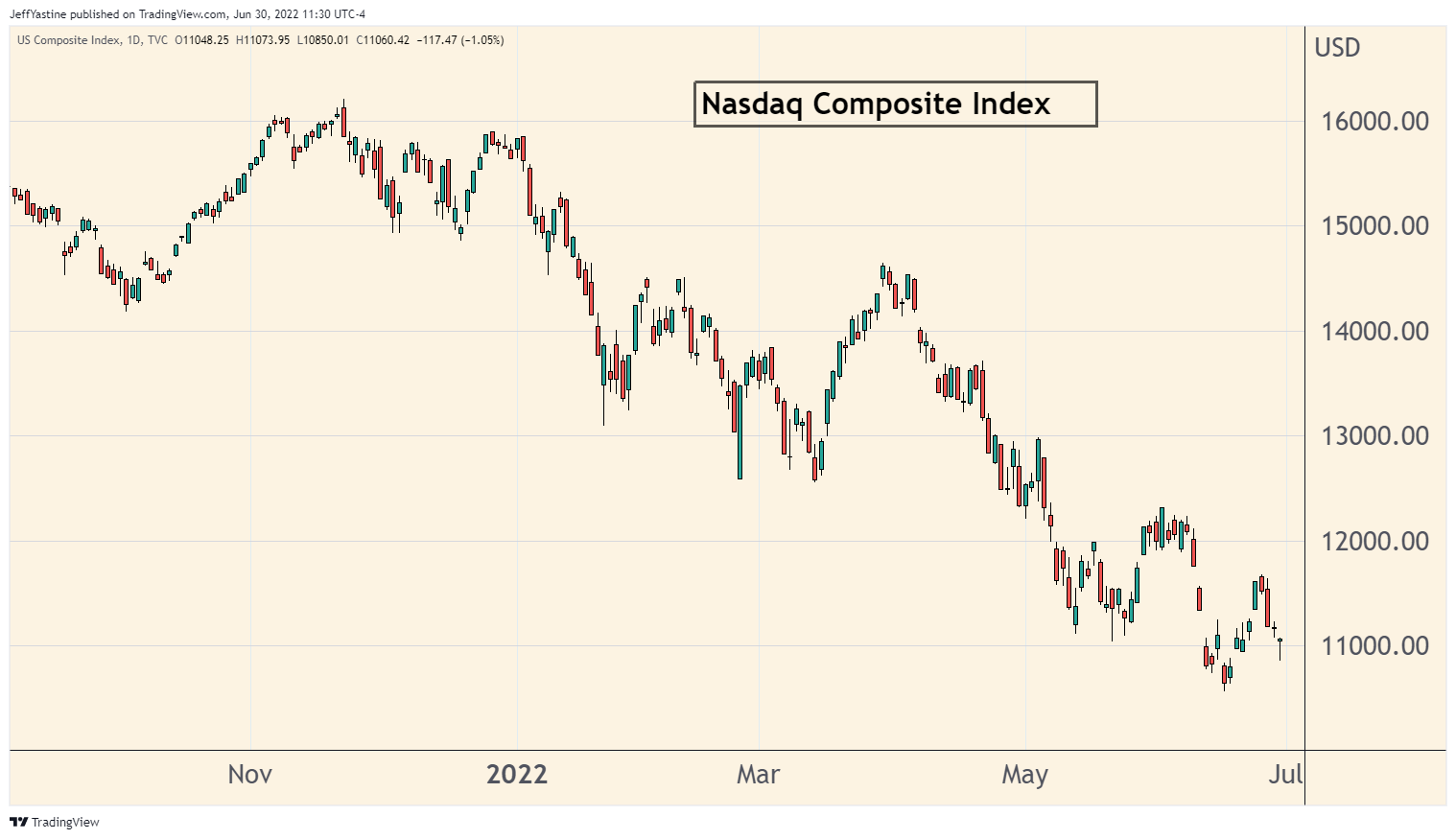Tools for Bear Market Survival

Navigating a bear market is tough. I don't need to tell you that.
On the surface, it's about losing money. Not good. If we haven't prepared properly and made sure (as I tell myself and all subscribers) to "cut losses and let your winners run"...the financial pain is great.
When we fail to do so (and losses grow and grow)...and the emotional pain is even greater.
We become desperate. We make bigger bets. And when those don't work out, our portfolios lose even more ground. Make too many bad bets in a row, and it's "game over" for our portfolio entirely.
Week-by-week, month-by-month, something like 90% of all stocks are losing ground.

So the odds are against us, right from the start. All we know is that the bear market will end - but we don't know for sure if that's next week, next month, or next year.
Survival Tools
To survive in extreme environments - deserts, oceans, swamps, outer space - we need a variety of skills, tools, and technologies to pull through.
It's the same with bear markets.
So what are the keys to surviving a grinding bear market?
- Patience.
- The ability to endure a degree of uncertainty and pain.
- MAKE SMALLER BETS.
- CUT LOSSES AT PRE-DETERMINED PRICE POINTS.
#1 and #2 are the emotional keys. But I capitalized #3 and #4 because, in practical terms, those are what make the biggest immediate difference in bear market survival terms.
Key #3: It's easy to get frustrated and start making bigger bets - the idea being to make most of your losses back in a few good trades. But that's an amateur gambler's move.
See, in a bear market, since most stocks are headed lower anyway, so the odds of hitting the jackpot are against us.
So if you have a deepening hole of losses, what's the first thing to do?
Bet smaller. Stop putting so much "dirt" (money) on your shovel!
When the tide eventually turns, and the bear market becomes the next bull market - you'll have that much less ground to make up.
A good example can be seen every day by my premium subscribers. Our goodBUYs portfolio is done about 9% since inception, while our benchmark small-caps growth index is down more than triple that amount:

Key #4: Whenever I issue a new trade recommendation, I not only state what the "buy price" is, but also what I call the "loss price."
If a stock I buy goes down instead of up, the "loss price" is the level where I'm going to sell the stock, put it in the loss column of the portfolio, and move on to other ideas.
In other words, I already know when I'm going to sell a stock for a loss BEFORE I buy it. I've also already figured out the proper number of shares to buy to the loss, by itself, doesn't damage my portfolio in a bad way.
Lots of folks have the idea of riding losses lower, with the goal that eventually the stock will turn around. The problem is that we never know which stocks are going to turn and which ones do not - or when.
As a result, during a bear market we often find ourselves stuck with an entire portfolio of "underwater" stocks.
And what happens when the next bull market arrives? Depending on your own financial situation, many folks don't even have the cash to take advantage of low prices to make new stock purchases - unless they sell some of their big losers first.
I've used this system for years. It works. It means occasionally selling stocks just before they turn and move higher.
But the important thing is I'm sidestepping those terrible declines where a stock falls 30%, then 40%, then 50% - and before you know it, down 70 or 80%.
The goal for any investor or trader is to survive a bear market with his/her portfolio and confidence intact.
The only way to achieve both is to use the tools to bear market survival at all times.
Jeff Yastine
Member discussion